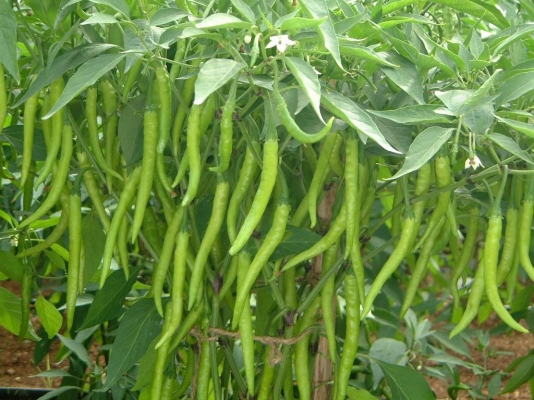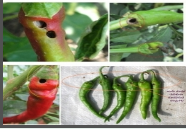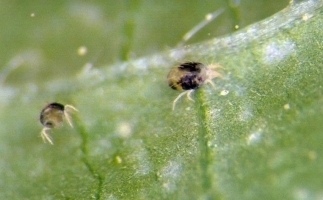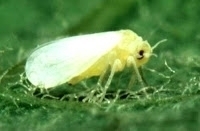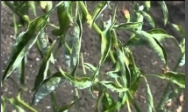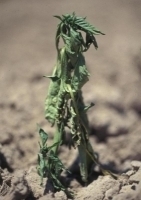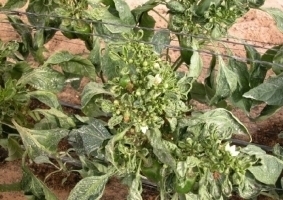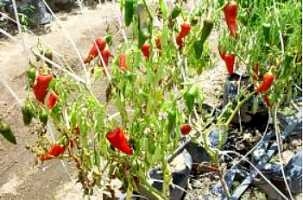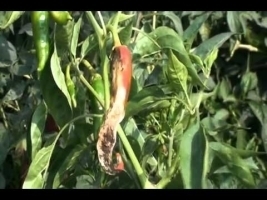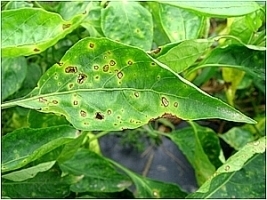Arka Meghana: High yielding hybrid with resistant to powdery mildew and viruses. Fruits are of length 10.6cm and width 1.2 cm. Fruits are dark green and turn to red on maturity. Gives average yield of 13.5t/acre green chilli and 2 t/acre dry chilli.
Arka Sweta: High yielding hybrid for fresh market. Suitable for cultivation in kharif and rabi seasons under irrigated conditions. Fruits length is 11-12 cm, width 1.2-1.5 cm. They are smooth and medium pungent. Fruits are light green and turn red at maturity. Tolerant to viruses. Yield 13t/acre (fresh) and 2t/acre (dry).
Kashi Early: Plants of are tall (100-110 cm height) without nodal pigmentation on dull green stems and bear pendant fruits. Fruits are long (8-9 x 1.0-1.2 cm), attractive, dark green and turn bright red at physiological maturity, pungent with smooth surface. First picking of the green fruits starts at about 45 days after transplanting. Average yield of this hybrid is 100 qtl/acre (red ripe).
Kashi Surkh: Plants are semi determinate (1-1.2 m), erect and nodal pigmentation on stem. Fruits are light green, straight, length 11-12cm, suitable for green as well as red fruit production. First harvest starts after 55 days of transplanting. Green fruit yield is 100 qtl/acre.
Kashi Anmol: Plants are determinate, dwarf (60-70 cm) with nodal pigmentation on stem and bear green attractive pendant fruits. First picking starts from 55 days after transplanting. It gives average yield of 80qtl/acre.
Pant C-1: This variety is easily distinguishable from the other varieties because it has upright fruiting pods. The pods are highly pungent, relatively small, broader at the base and narrow towards the tip. It is moderately resistant to mosaic and leaf curl virus. The green pod yield of this variety is 110qtl/acre. The dry pod yield is about 20qtl/acre.
Kashmir Chilly : Fruits are long, fleshy and deep red in color. Suitable for cultivation in winter.
Hot Portugal: The fruits are deep green in color but gets red when mature. The fruit are 11-15 cm long and gives an average yield of 40-50 qtl/acre.
Soorajmukhi: Short plant, deep color fruits, red at maturity and is excessive bitter in taste. Fruits are in bunches of 8-12. It gives an average yield of 31-40qtl/acre.
Sweet Banana: Fruits are light yelow in color which becomes red at maturity. The fruits are 18-20cm long and are excessive bitter in taste. It gives an average yield of 40qtl/acre.
Hungarian Wax: Fruits are red at maturity, 10-16cm long and is less bitter in taste. It gives an average yield of 31-33qtl/acre.
Other States variety
Pusa Jwala: Plants are dwarf, bushy, light green. Fruits are 9-10 cm long; light green, highly pungent, fairly tolerant to thrips and mites. Average yield of 85qtl/acre (green) and 18qtl/acre (dry).
Pusa Sadabahar: Plants are erect, perennial (2-3 years), 60-80cm tall, fruits are 6-8cm long, born in clusters with 6-14 fruits/cluster, ripe fruits dark red, highly pungent, resistant to CMV, TMV and leaf curl complex, first picking in 75-80 days after transplanting. It gives an average yield of 95qtl/acre (green) and 20qtl/acre (dry).
NP-46A: High yielding variety with medium size fruit. It gives average yield of 40qtl/acre.
G 5: Chilly is thick, glossy with deep red color. Gives average yield of 20qtl/acre.
G 3: Suitable for cultivation under rainfed and irrigated conditions. Chilly are having high pungency. Gives average yield of 16qtl/acre.
Pant C 2, Jawahar, Mathaniya Long, RCH 1
Kashi Vishwanath
Sankeshwar: Mild flavor, long and red color variety. It is suitable for export.
Byadgi (Kaddi) : Mild flavor, long and bright red color variety.
Dabbi: Mild flavor, long and thick blackish variety.
Tomato chilly
Tadappally
S9 Mundu, Sattur s4, Sangli Sannam, Nalchetti, Nagpur, Madras Pari, , Kanthari white, Guntur Sannam, Ellachipur Sannam.

